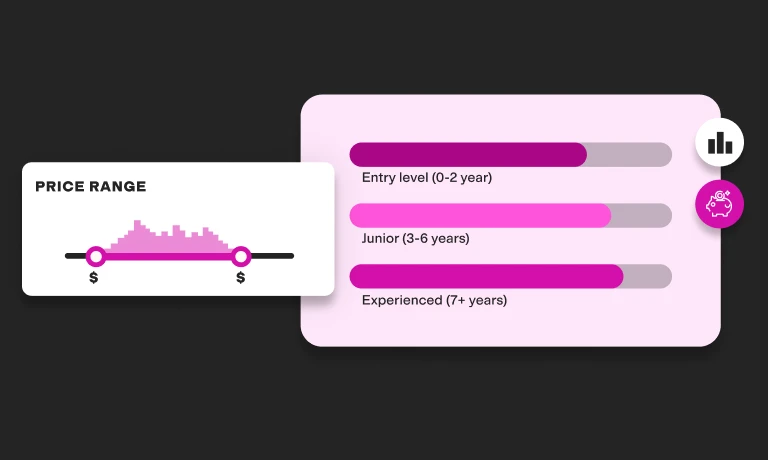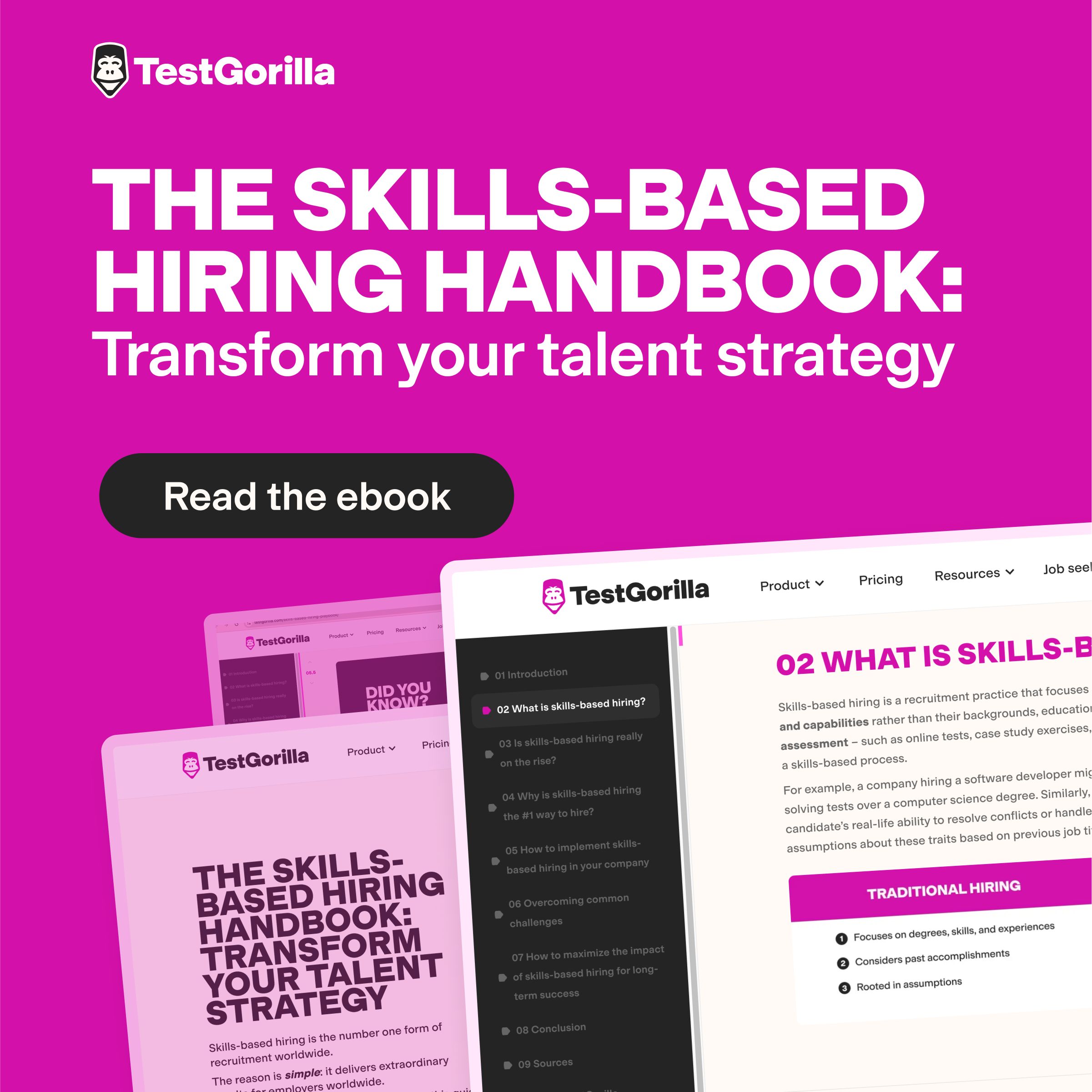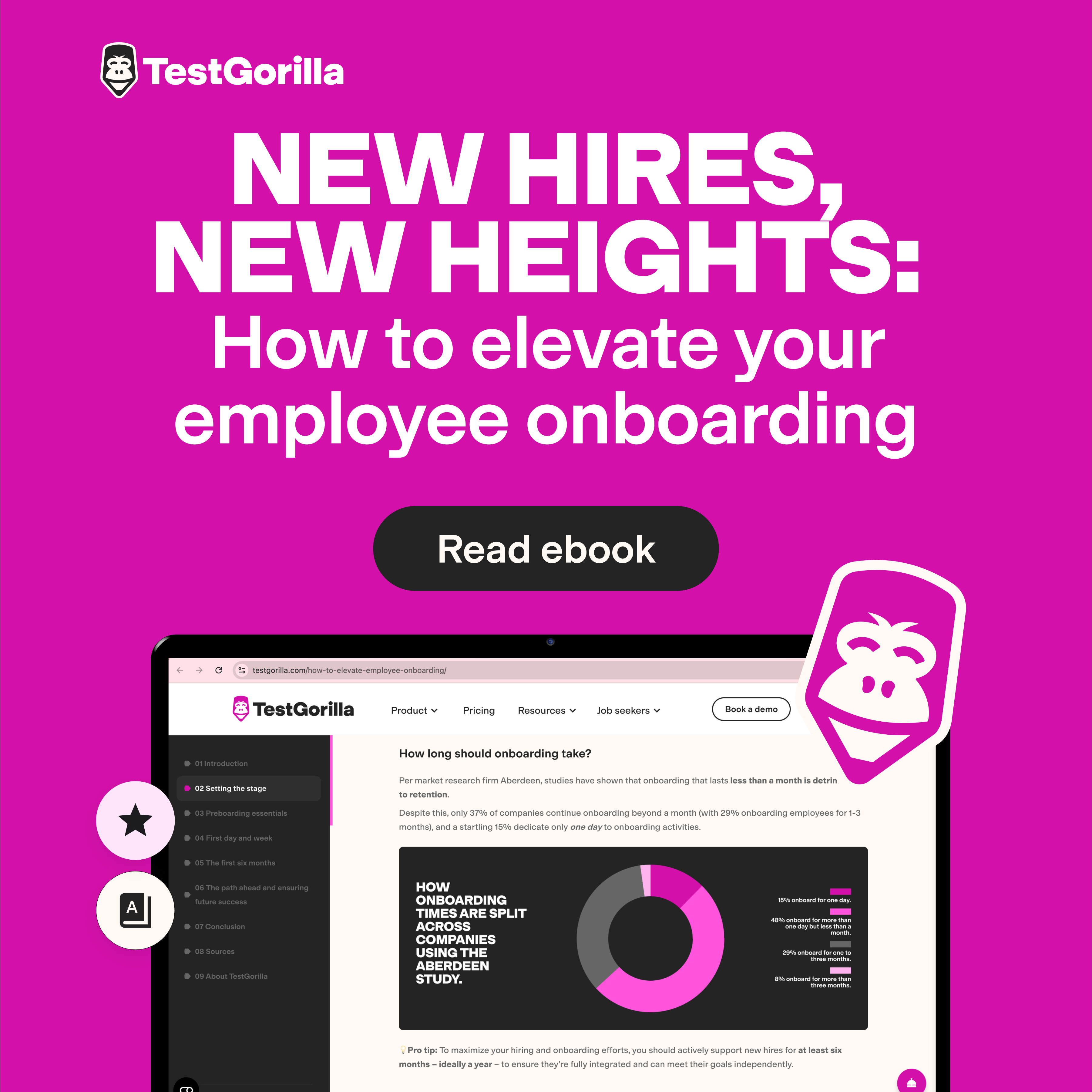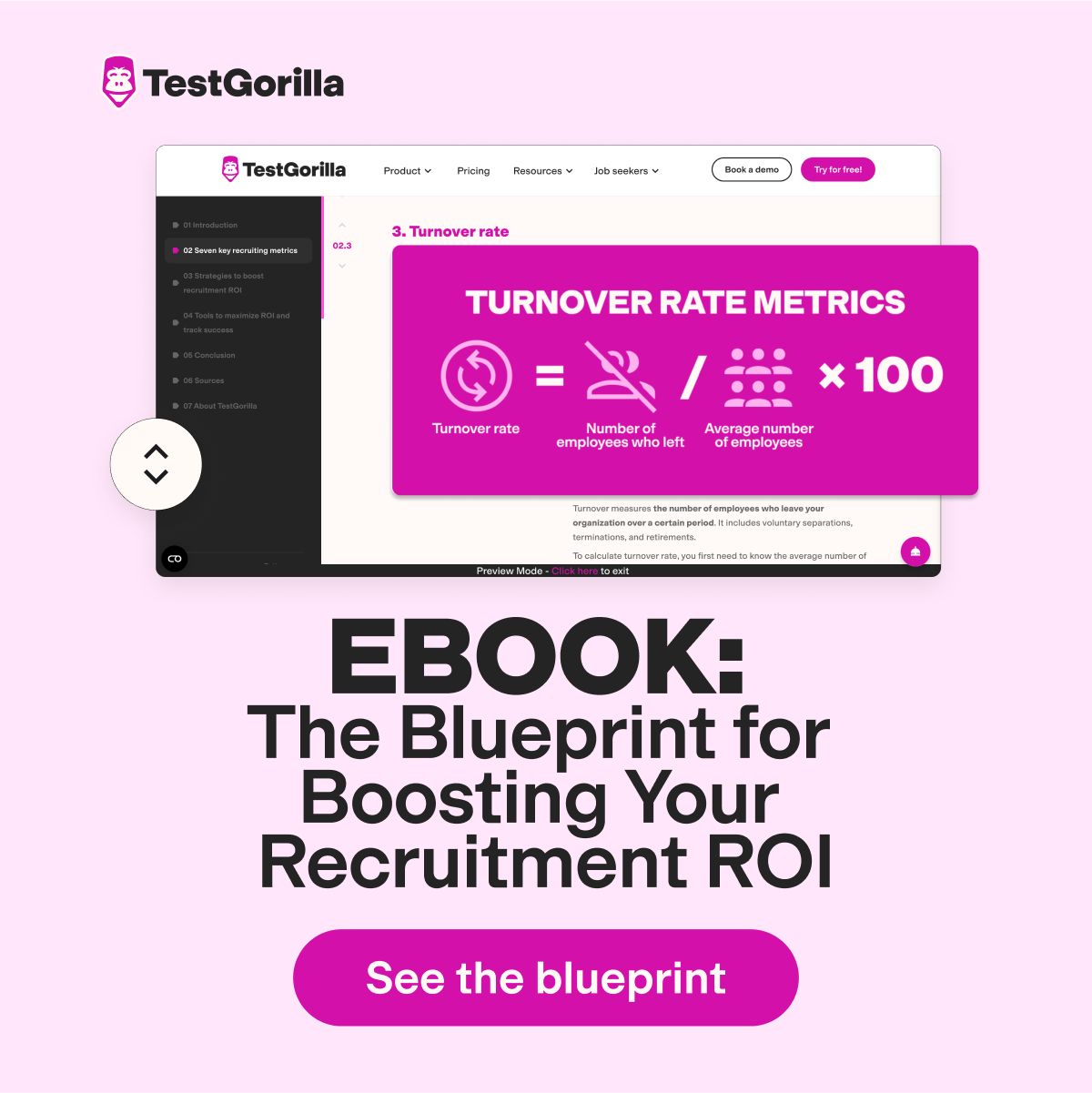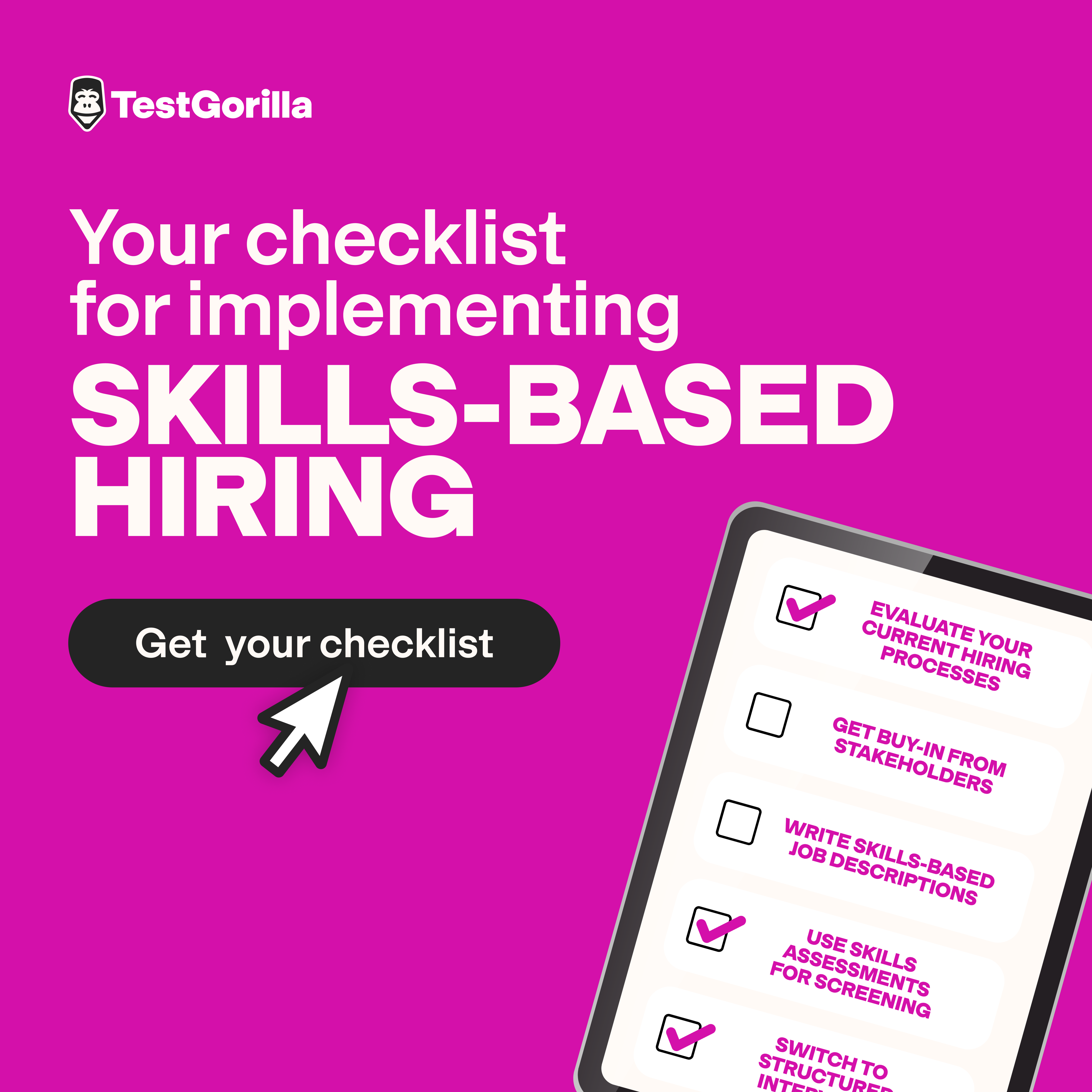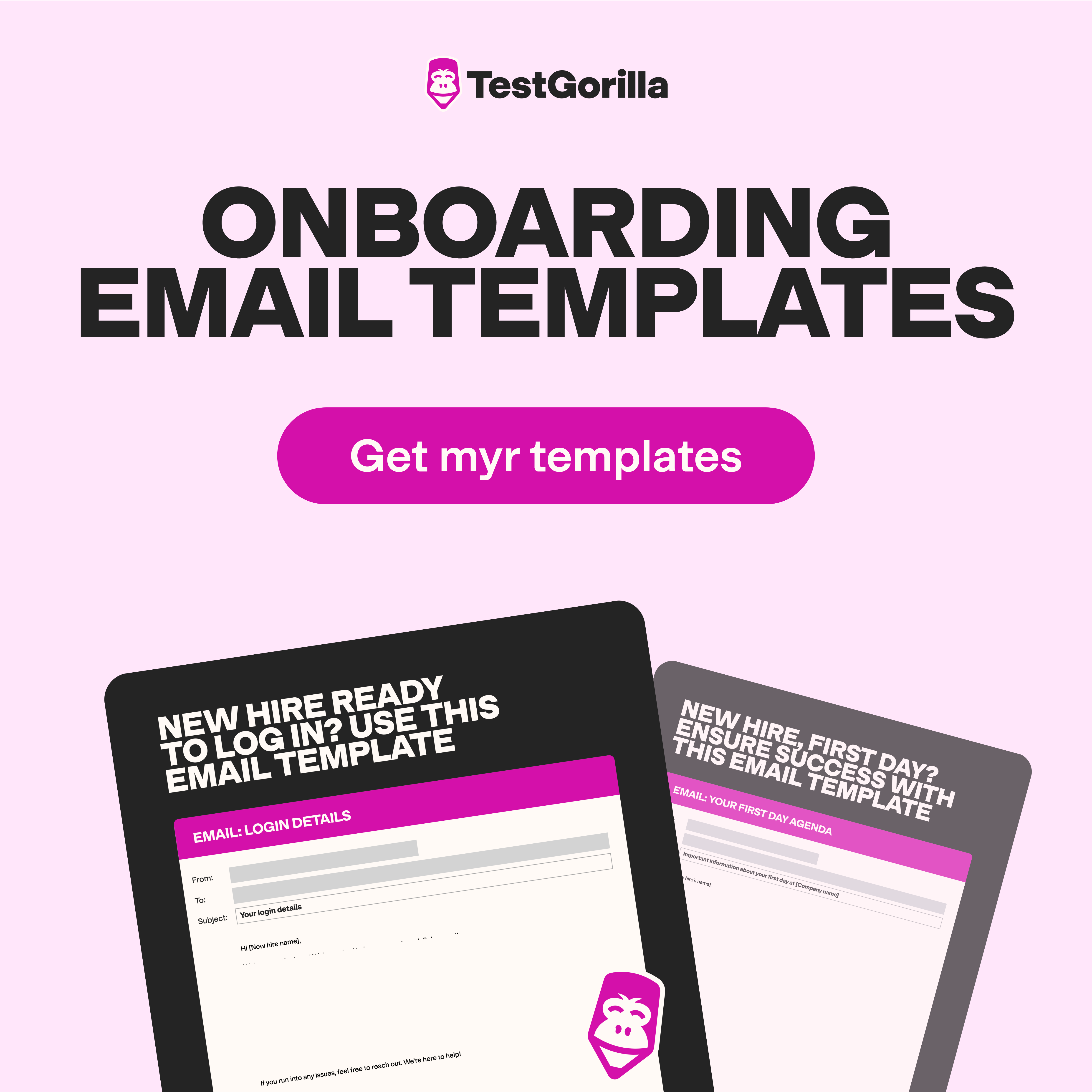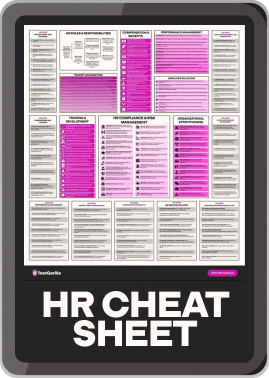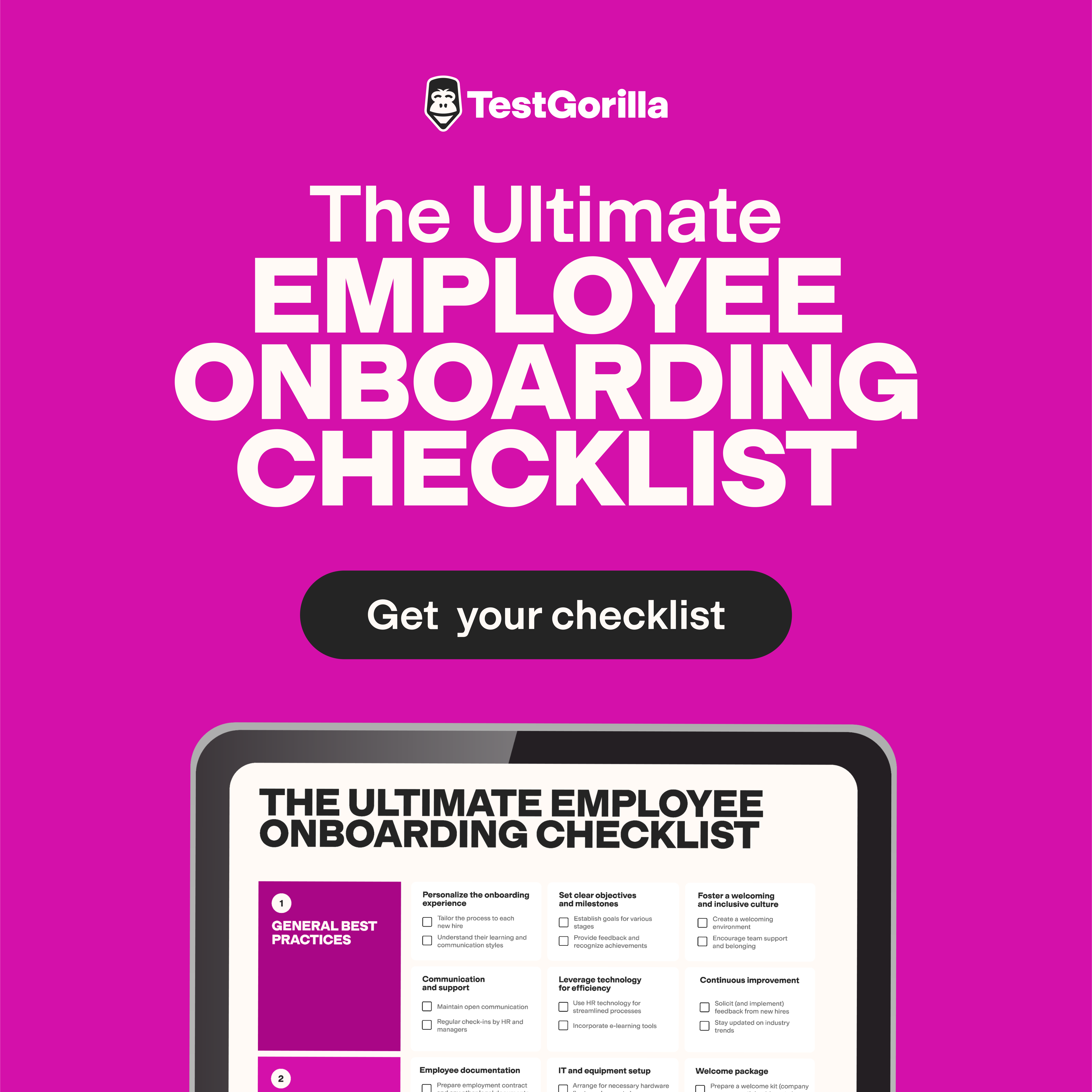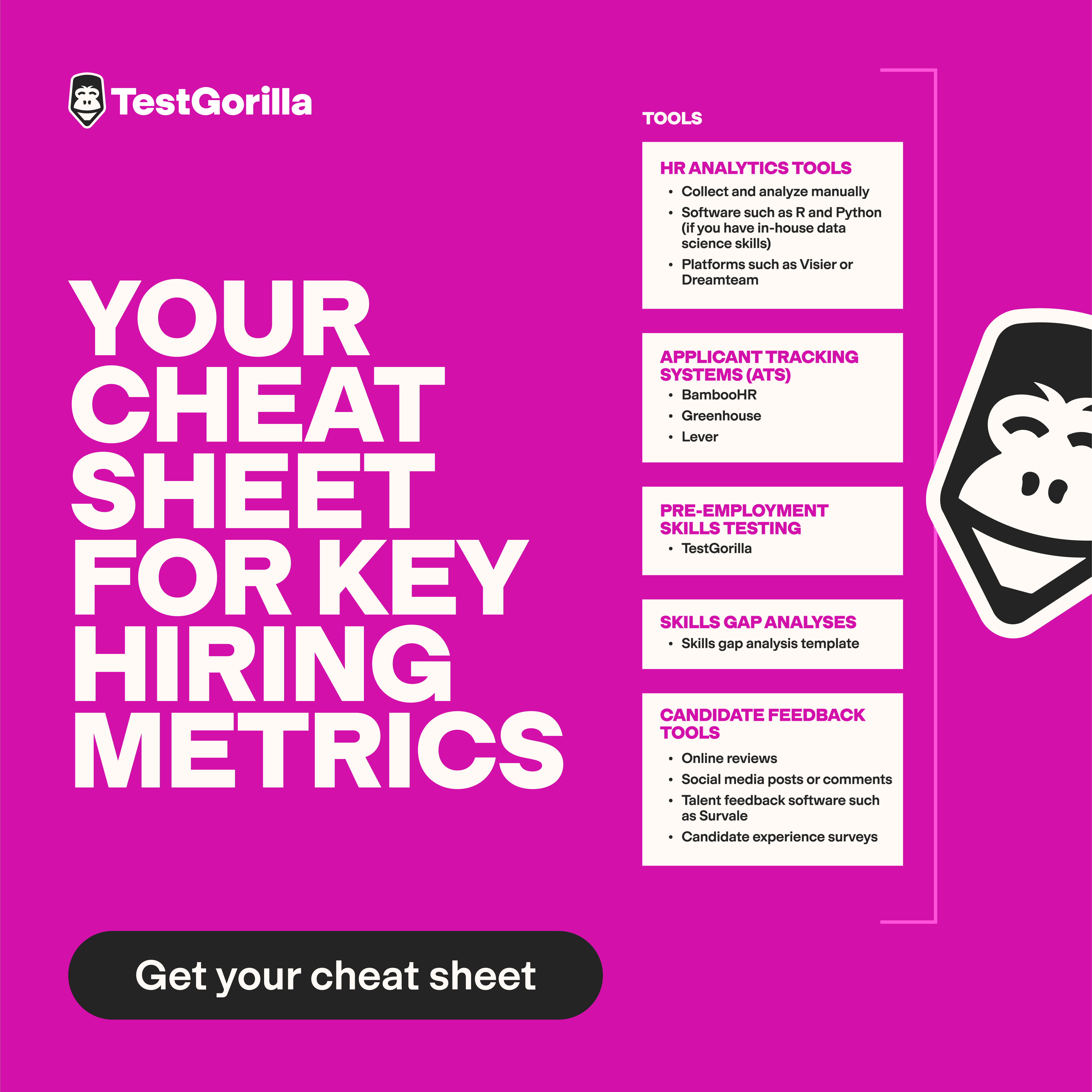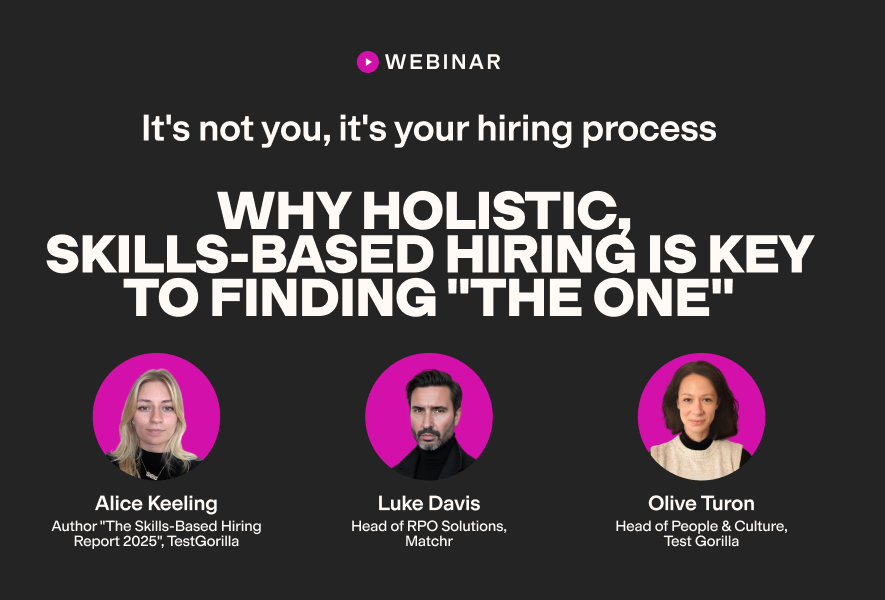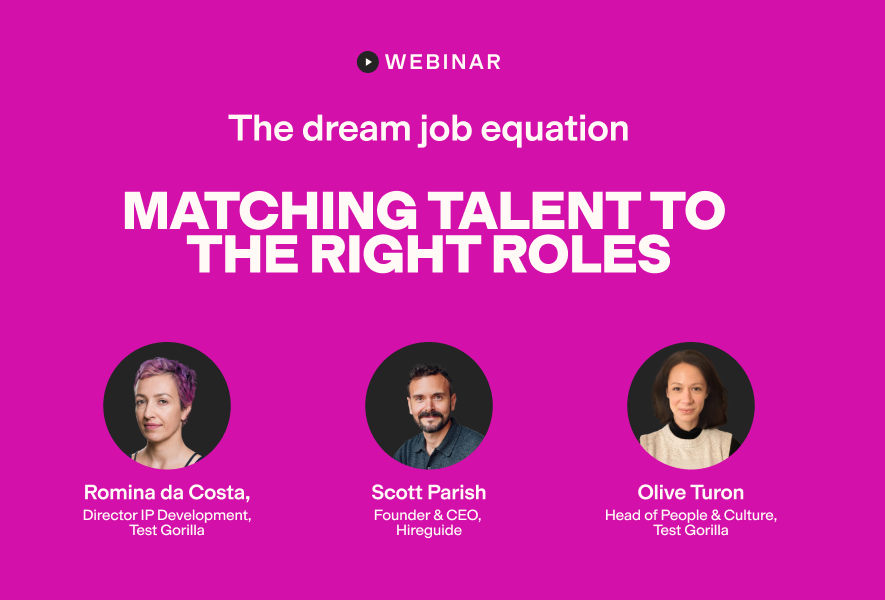TestGorilla analytics is here: See how your assessments are really performing
Analytics is in beta launch with select customers. If you would like to be one of the first users, please contact the support team.
Hiring is full of decisions; you’ll finally have the data to make them confidently.
We’re excited to introduce TestGorilla Analytics: a powerful new feature that gives you clear, real-time visibility into how your hiring funnel and assessments are performing, all directly inside your TestGorilla workspace.
Whether you're a recruiter managing 10 open roles or a TA manager reporting to the C-suite, TestGorilla Analytics gives you the clarity to act smarter and faster without ever touching a spreadsheet.
Table of contents
Two dashboards. Endless visibility
Account-level dashboard
Your high-level view of everything happening in your TestGorilla workspace.
Key Metrics:
Funnel breakdown: Invited → Opened → Started → Completed
Completion rate: See how many candidates make it to the finish line
Average & median scores: Monitor test performance at a global level
Recruiter usage: Track invites, activity, and conversions by recruiter
Top assessments: Spot high-use tests and identify performance trends
What to look for:
Low opened or started rates? Your invite email or test landing page may need refinement.
Completion rates below 60%? The assessment might be too long or confusing.
Low average scores across the board? Consider simplifying or realigning tests to job role expectations.
One recruiter consistently outperforms others? That’s a best practice waiting to be shared.
“It’s the first time I can see exactly where the drop-offs happen — and back it up with data.” — Samantha Barnes, Customer Interview
Assessment-level dashboard
Drill into each assessment to understand the candidate experience and test effectiveness.
Key metrics:
Stage-by-stage funnel: Where candidates drop off (e.g., at qualifying questions, before test 1, mid-assessment)
Score distribution: Average, median, and percentile performance per test
Completion time: How long candidates take per test or question
Qualifying question impact: % of candidates filtered out before reaching the test
What to evaluate:
Drop-offs at qualifying questions >50%? You might be filtering too early or too harshly.
Completion time >10 min per test? Could indicate cognitive overload — consider shortening.
Average score <40%? The test may be misaligned or overly difficult.
Uniform high scores >70%? The test might be too easy and not filter effectively.
Wide standard deviation in scores? You might be attracting a diverse candidate quality pool, or the test may lack clarity.
“Seeing time-per-question and knowing where candidates drop is a total game-changer.” — Rachel Joffe, Customer Interview
The best insights on HR and recruitment, delivered to your inbox.
Biweekly updates. No spam. Unsubscribe any time.
What you can do with TestGorilla analytics
Answer funnel questions quickly
Stop guessing where candidates fall off — now you can see it clearly and act.
Improve your assessments faster
Spot trends in scores, completions, and drop-offs. Adjust what’s not working.
Create report-ready exports
Filter by recruiter, department, or timeframe and download results in seconds.
Share insights with leadership
Show ROI, recruiter usage, and score trends with clear, visual data.
Real-world examples
Scenario 1: You’ve invited 400 candidates to a role but only 110 completed the test. ➡ Dive into the Account Funnel to check invite > open > start drop-offs. ➡ Open the Assessment Dashboard to check if a specific test is causing exits.
Result:
You learn that the third test in your assessment has an average completion time of 13 minutes and the highest exit rate. It's time to streamline.
Scenario 2: One team is struggling to find qualified candidates for a specific role. ➡ You check the Assessment Score Distribution and see that the average score is 32% with a very high failure rate. ➡ After reviewing, you realize the test includes questions beyond the role’s scope.
Result:
You replace it with a more targeted test — scores go up, and hiring resumes.
Scenario 3: You’re seeing inconsistent hiring success across recruiters for the same role.
➡ Go to the Account-level dashboard and filter by recruiter. ➡ You notice that Recruiter A has a 70% completion rate, while Recruiter B has only 35%. ➡ A deeper look shows that Recruiter B is using a longer, older version of the assessment.
Result: You align both recruiters on the same optimized version, and completion rates stabilize across the team.
Scenario 4: A hiring manager says too many candidates are being screened out at the beginning of the assessment.
➡ Open the Assessment-level dashboard and review the Qualifying Questions table. ➡ You see that 62% of candidates are being screened out at the QQ stage. ➡ On inspection, one question is phrased ambiguously, leading qualified candidates to fail.
Result: You reword the question for clarity, and screen-out rates drop to 28% — increasing the test completion volume without compromising standards.
Scenario 5: Leadership asks you to justify the ROI of using TestGorilla.
➡ You open the Account-level dashboard and export:
Number of assessments completed
Funnel conversion rates
Time savings from auto-screened candidates
➡ You highlight that 400+ assessments were completed in Q1, with a 55% conversion from invite to completion, saving your team weeks of manual screening.
Result: You package the data into a quarterly report, and the team greenlights expanding TG to new departments.
Why this matters
We’ve heard this again and again from customers:
“I love the assessments, but I need to prove they’re working.” Now you can.
With TestGorilla Analytics, you get the visibility to:
Shorten time-to-decision by seeing what’s working at a glance
Support process improvements with recruiter-level insights
Justify investment in skill-based hiring with concrete usage data
Available now on all plans
There are no add-ons, no extra setup, and no need to log into your workspace and click on the Analytics tab to get started.
Both dashboards are ready to use, with filters, exports, and all the necessary clarity.
Next steps
Explore your dashboards and start filtering by role, recruiter, or test
Share insights with your team — what’s working? What’s not?
Reach out to your CS manager if you’d like a walkthrough or 1:1 support
Have questions? We’re here. Contact us or book a quick demo of TestGorilla Analytics in action.
You've scrolled this far
Why not try TestGorilla for free, and see what happens when you put skills first.





